Unsolved Chess Mysteries (18)
By Edward Winter
A missed mate in one?
C.N. 1301 gave a position from the game A. Steiner v L. Prins at the 1936 Olympiad
in Munich, from page 81 of Olympische Blitzsiege by E.J. Diemer (published
in Kecskemét and undated):
Black has just played 31...Nd7-f8, and White replied 32 Nxh5, instead of giving
immediate mate. The book, which made no mention of the possibility, gave the
game-score as follows: 1 e4 Nc6 2 d4 d5 3 e5 Bf5 4 c3 e6 5 Nd2 Nb8 6 g4 Bg6
7 Nh3 c5 8 Nf4 Qc7 9 h4 cxd4 10 Bb5+ Kd8 11 cxd4 Bc2 12 Qf3 Ne7 13 Nh3 Nec6
14 Qc3 Be4 15 O-O Bb4 16 Qe3 Bxd2 17 Bxd2 h5 18 Be2 Qb6 19 Bc3 Ne7 20 b4 Nbc6
21 b5 Nb8 22 Rfc1 Ke8 23 Bb4 Nd7 24 Qc3 Qd8 25 Qc7 Nc6 26 Qxd8+ Nxd8 27 f3 Bh7
28 Rc7 b6 29 Rac1 f6 30 exf6 gxf6 31 Nf4 Nf8 32 Nxh5 Nf7 33 Ng7+ Resigns.
In a letter to us dated 22 October 1987 the late Lodewijk Prins wrote:
‘I cannot explain Steiner’s overlooking a mate
in one. If the diagrammed position is correct, both sides must have been extremely
short of time, I should think.’
Do any other sources suggest a different game-score?
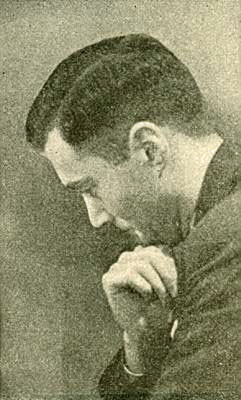
Lodewijk Prins
Who are the others?

This photograph, given in C.N. 4237, was published as a supplement to the January
1930 issue of L’Echiquier. Alexander Alekhine and Efim Bogoljubow
are seated in the foreground and the FIDE President, Alexander Rueb, is in the
centre. Who are the others?
Stalemate combination
C.N. 52 gave the following piece of play and asked if the full game-score was
available, but nothing more has yet been found.
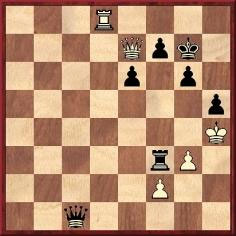
‘Lazdies v Zenitas, Riga, 1936’
White is said to have played 1 Qf8+ Kf6 2 Qh8+ Kf5 3 g4+ hxg4 4 Rd5+ exd5 5
Qc8+ Drawn.
We took the position from page 64 of The Pleasures of Chess by Assiac
(New York, 1952), but another secondary source, page 268 of Kurzgeschichten
um Schachfiguren by Kurt Richter (Hollfeld, 1991), gave the players’
names as Lazdiņš and Zemītis and the date as 1935.
Staunton in oils
From page 129 of the April 1930 BCM:
‘A very interesting meeting of the Executive Committee of the British
Chess Federation was held in London, on 8 March. Major Sir Richard Barnett,
who was in the chair, very kindly offered to purchase and present to the Federation
an oil painting of Howard Staunton, dated 1846 ...’
This report was briefly mentioned in C.N. 1136, but no further information
about the portrait has come to our attention. Do readers have any details?
The Fox enigma
We have often discussed positions in which a player moved his queen to KKt6
(i.e. g6 or g3) when the opponent had three unmoved pawns before his castled
king, and our findings have been summarized in the feature article The
Fox Engima.
Although only ten games have so far been found which contain the queen sacrifice,
two of them were allegedly won by the same player, A.W. Fox, in quick succession:
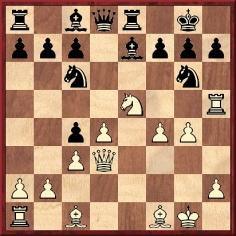
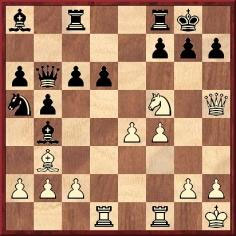
Positions before Fox played 18 Qxg6 and 21 Qg6. |
Indeed, as Harrie Grondijs (Rijswijk, the Netherlands) pointed out in C.N.
4409, both game-scores appeared on page 20 of the Chicago Tribune of
12 May 1901 (games two and four):
Is this a remarkable, genuine coincidence or is something darker afoot?
The origins of the Swiss System
Relatively little information is available about how the Swiss System originated,
and in C.N. 4118 Richard Forster (Zurich) summarized what is currently known:
‘When did the Swiss System obtain its name and when was it invented?
The standard reference works mention that it was introduced by Dr Julius Müller
of Brugg at the 1895 Swiss Championship in Zurich.
Julius Müller (1857-1917) was a meteorologist and teacher in Brugg (not
far from Zurich). He was a founding member of the Swiss Chess Federation in
1889, and a member of the committee and then treasurer until 1903, when he
was elected an honorary member. The Swiss pairing system, the official magazine
(Schweizerische Schachzeitung) and many other sparkling ideas are credited
to him (as noted in his obituary in the Schweizerische Schachzeitung,
July 1917, page 103).
The Swiss system was created for the Swiss chess congresses which, starting
in 1889 in Zurich, usually packed four or five rounds into two or three days
(plus a problem-solving contest, a general assembly and a banquet). As is
shown by the tournament regulations (Turnier-Ordnung), during the first
few years a prototype of the modern system was used: after each round the
field was, according to the results of the previous round, divided into two
groups, winners and losers, who were then paired among each other by lot.
In case of a draw it was decided by lot who would belong to the “winners”
and who to the “losers”. Only at the very end were the points
gained added together to ascertain the final ranking. Whether or not attention
was paid to equal colour distribution is unknown, and we do not know for sure
whether the same two players could be paired against each other more than
just once. In the third edition, for instance, two players won with 4/4 in
a field of 16; this would not be possible under today’s system because
they would have met in the fourth round at the latest.
For the ninth congress (Lausanne, 1899) the rules were changed so that
players with an equal number of points were paired against each other, but
in case of a draw one player was still counted as the “winner”
and the other as the “loser”. Only in the rules for the St Gallen
congress (1901) was it stated that the actual number of points was the sole
criterion for pairing.
This does not exclude the possibility that the pairings were handled in
the modern way long before the St Gallen tournament (after all, the members
of the pairing committee were presumably always the same), but it still leaves
open the question of why the 1895 tournament is commonly singled out as marking
the birth of the Swiss System.
Incidentally, in 1940 Erwin Voellmy referred to Julius Müller as the inventor
of the “Swiss (or sometimes Danish) pairing system” (Schweizerische
Schachzeitung, May 1940, page 71). What is known about these Danish roots
of the Swiss System?’
Rossolimo v Livingstone
In C.N. 3815 Joshua B. Lilly (Martinsville, VA, USA) raised the subject of
a famous game, Rossolimo v Livingstone, New York, 1961, asking for specifics
as to a contemporary source, the occasion and Black’s identity:
1 e4 d5 2 exd5 Qxd5 3 Nc3 Qa5 4 d4 Nf6 5 Nf3 Bg4 6 h3 Qh5 7 Be2 Nc6 8 O-O Bxh3
9 gxh3 Qxh3 10 Ng5 Qh4 11 d5 Ne5 12 Bb5+ c6 13 dxc6 bxc6 14 Nd5 O-O-O 15 Ba6+
Kb8 16 Bf4 Rxd5 17 Bxe5+ Ka8
18 c4 Qxg5+ 19 Bg3 Rxd1 20 Raxd1 Nd5 21 cxd5 c5 22 b4 c4 23 Rd4 e5 24 dxe6
Bxb4 25 Rd7 Rb8 26 Rfd1 Be7 27 exf7 c3 28 f8(Q) Resigns.
Jack O’Keefe (Ann Arbor, MI, USA) responded in C.N. 4047:
‘I have part of an answer to the mystery of the Rossolimo v Livingstone
game. It was published in B.H. Wood’s column in the Illustrated
London News, 30 December 1961, page 1160. His introduction to the game
was:
“N. Rossolimo, born in Odessa of Greek parentage, wandered to Prague,
then Paris. He is now in New York. Here is a real Wild West game he played
there recently.”
Wood wrote nothing further about the occasion or the opponent. However,
Chess Life for 1961 gives no tournaments in which Rossolimo took part,
and it seems likely that the game was not played in a serious event.’
Can any further particulars be discovered?
Birdie Reeve
A number of C.N. items (as listed in our Factfinder)
have discussed the so-called chess prodigy Birdie Reeve. C.N. 3572 noted that
page 81 of The Gambit, March 1928 reproduced the following from an unidentified
publication:
The caption reads:
‘“Birdie” Reeve, Chicago, 17, considered the world’s
cleverest girl of her age, has just played simultaneously 10 of the leading
chess players of the West and claims championship of her sex. She has a record
of 190 words a minute on the typewriter and is the author of three volumes
on the science of words.’
As reported in C.N. 3612, Jerry Spinrad (Nashville, TN, USA) provided us with
a large number of newspaper quotations about her typing exploits (which made her
a vaudeville star) and family background, although he found only one reference
to chess. That was a report on page 12 of the
Washington Post, 11 November
1928 entitled ‘Masters at Chess Draw with London’, which ended as
follows:
‘Miss Birdie Reeves [sic], one of the best women chess players
in America, was also on the scene during the major part of the performance
and furnished excellent entertainment for the gathering of fans.’
That event, a Washington v London cable match on 10 November featuring such
players as Mlotkowski, Whitaker, Yates and Michell, was the subject of reports
on page 182 of the December 1928 American Chess Bulletin and pages 441-443
of the December 1928 BCM, but they made no mention of Birdie Reeve.
C.N. 3647 mentioned that we had acquired a promotional leaflet (no year indicated)
for one of Birdie Reeve’s exhibitions. It included a photograph of her
ostensibly giving a simultaneous display:

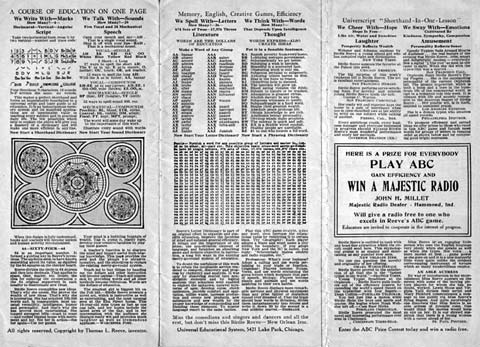
Larger versions of side one and side
two of the leaflet are provided for perusal
(large files).
In the same C.N. item Jerry Spinrad reported that Birdie Reeve died of a heart
attack on 31 May 1996 at the age of 89, and that her obituary was published
on page 53 of the Chicago Sun Times, 3 June 1996. There was no
mention of chess, and we have yet to find any reference to her in a chess magazine
other than, as indicated above, the US publication The Gambit in 1928.
Submit information
or suggestions on chess mysteries
 Edward
Winter is the editor of Chess
Notes, which was founded in January 1982 as "a forum for aficionados
to discuss all matters relating to the Royal Pastime". Since then around
5,000 items have been published, and the series has resulted in four books by
Winter: Chess
Explorations (1996), Kings,
Commoners and Knaves (1999), A
Chess Omnibus (2003) and Chess
Facts and Fables (2006). He is also the author of a monograph
on Capablanca (1989).
Edward
Winter is the editor of Chess
Notes, which was founded in January 1982 as "a forum for aficionados
to discuss all matters relating to the Royal Pastime". Since then around
5,000 items have been published, and the series has resulted in four books by
Winter: Chess
Explorations (1996), Kings,
Commoners and Knaves (1999), A
Chess Omnibus (2003) and Chess
Facts and Fables (2006). He is also the author of a monograph
on Capablanca (1989).
Chess Notes is well known for its historical research, and anyone browsing
in its archives
will find a wealth of unknown games, accounts of historical mysteries, quotes
and quips, and other material of every kind imaginable. Correspondents from
around the world contribute items, and they include not only "ordinary
readers" but also some eminent historians – and, indeed, some eminent
masters. Chess Notes is located at the Chess
History Center.
Articles by Edward Winter
-
Edward Winter presents: Unsolved Chess Mysteries (1)
14.02.2007 – Since Chess
Notes began, over 25 years ago, hundreds of mysteries and puzzles have
been discussed, with many of them being settled satisfactorily, often thanks
to readers. Some matters, though, have remained stubbornly unsolvable –
at least so far – and a selection of these is presented here. Readers are
invited to join
in the hunt for clues.
-
Edward Winter presents: Unsolved Chess Mysteries (2)
12.03.2007 – We bring you a further selection
of intriguing chess mysteries from Chess
Notes, including the origins of the Marshall Gambit, a game ascribed
to both Steinitz and Pillsbury and the bizarre affair of an alleged blunder
by Capablanca in Chess Fundamentals. Once again our readers are invited
to join the hunt
for clues.
-
Edward Winter presents: Unsolved Chess Mysteries (3)
27.03.2007 – Recently-discovered photographs
from one of Alekhine’s last tournaments, in Spain in 1945, are proving baffling.
Do they show that a 15-move brilliancy commonly attributed to Alekhine is
spurious? And do they disprove claims that another of his opponents was
an 11-year-old boy? Chess
Notes investigates, and once again our readers are invited to join
in the hunt for clues.
-
Edward Winter presents: Unsolved Chess Mysteries (4)
10.04.2007 – What would have happened if the
score of the 1927 Capablanca v Alekhine match had reached 5-5? Would the
contest have been declared drawn? The affair has been examined in depth
in Chess Notes.
Here chess historian Edward Winter sifts and summarizes the key evidence.
There is also the strange case of a fake photograph of the two masters.
Join
the investigation.
-
Edward Winter presents: Unsolved Chess Mysteries (5)
30.04.2007 – We bring you a further selection
of mysteries from Edward Winter’s Chess
Notes, including an alleged game by Stalin, some unexplained words attributed
to Morphy, a chess magazine of which no copy can be found, a US champion
whose complete name is uncertain, and another champion who has vanished
without trace. Our readers are invited to join
in the hunt for clues.
-
Edward Winter presents: Unsolved Chess Mysteries (6)
19.05.2007 – A further miscellany of mysteries
from Chess Notes is presented
by the chess historian Edward Winter. They include an alleged tournament
game in which Black was mated at move three, the unclear circumstances of
a master’s suicide, a chess figure who was apparently unaware of his year
of birth, the book allegedly found beside Alekhine’s body in 1946, and the
chess notes of the poet Rupert Brooke. Join
in the hunt for clues.
-
Edward Winter presents: Unsolved Chess Mysteries (7)
02.06.2007 – The chess historian Edward Winter
presents another selection of mysteries from Chess Notes. They include an
alleged game by Albert Einstein, the origin of the Trompowsky Opening, the
termination of the 1984-85 world championship match, and the Marshall brilliancy
which supposedly prompted a shower of gold coins. Readers are invited to
join in the hunt
for clues.
-
Edward Winter presents: Unsolved Chess Mysteries (8)
In this further selection from Chess
Notes historian Edward Winter examines some unauthenticated quotes,
the Breyer Defence to the Ruy López, the origins of the Dragon Variation,
the contradictory evidence about a nineteenth century brilliancy, and the
alleged 1,000-board exhibition by an unknown player. Can our readers help
to solve these new
chess mysteries?
-
Edward Winter presents: Unsolved Chess Mysteries (9)
Why did Reuben Fine withdraw from the 1948 world championship?
Did Capablanca lose an 11-move game to Mary Bain? Was Staunton criticized
by Morphy for playing ‘some devilish bad games’? Did Alekhine
play Najdorf blindfold? Was Tartakower a parachutist? These and other mysteries
from Chess
Notes are discussed by Edward Winter. Readers are invited to join in
the hunt
for clues.
-
Edward Winter presents: Unsolved Chess Mysteries (10)
15.07.2007 – Did Tsar Nicholas II award the ‘grandmaster’
title to the five finalists of St Petersburg, 1914? What connection exists
between the Morphy family and Murphy beer? Can the full score of one of
Pillsbury’s most famous brilliancies be found? Did a 1940s game repeat
a position composed 1,000 years previously? Edward Winter, the Editor of
Chess
Notes, presents new
mysteries for us to solve.
-
Edward Winter presents: Unsolved Chess Mysteries (11)
01.08.2007 – Did Alekhine attempt suicide in 1922? Why is
1 b4 often called the Hunt Opening? What are the origins of the chess proverb
about the gnat and the elephant? Who was the unidentified figure wrongly
labelled Capablanca by a chess magazine? Does Gone with the Wind
include music composed by a chess theoretician? These and other mysteries
from Chess Notes
are discussed by the historian Edward Winter. Readers are invited to join
the hunt for clues.
-
Edward Winter presents: Unsolved Chess Mysteries (12)
12.08.2007 – This new selection from Chess
Notes focuses on José Raúl Capablanca (1888-1942). The chess historian
Edward Winter, who wrote a book about the Cuban genius in the 1980s (published
by McFarland), discusses a miscellany of unresolved matters about him, including
games, quotes, stories and photographs. Readers are invited to join
in the hunt for clues.
-
Edward Winter presents: Unsolved Chess Mysteries (13)
26.08.2007 – In a 1937 game did Alekhine play two moves in succession?
Can the full score of a Nimzowitsch brilliancy be found? Who was Colonel
Moreau? Why was it claimed that Morphy killed himself? Who were the first
masters to be filmed? What happened in the famous Ed. Lasker v Thomas game?
Is a portrait of the young Philidor genuine? From Chess
Notes comes a new selection of mysteries
to solve.
-
Edward Winter presents: Unsolved Chess Mysteries (14)
The latest selection from Chess
Notes consists of ten positions, including fragments from games ascribed
to Capablanca and Nimzowitsch. Was an alleged Bernstein victory a composition?
What is known about a position in which Black resigned despite having an
immediate win? Can more be discovered about the classic Fahrni pawn ending?
Readers are invited to join
in the hunt for clues.
-
Edward Winter presents: Unsolved Chess Mysteries (15)
Chess books repackaged as camouflage in Nazi Germany. Numerous contradictions
regarding a four-move game. The chess encyclopaedia that never was. Quotes
strangely attributed to Spielmann and Capablanca. These and other mysteries
are discussed in the latest selection from Chess
Notes. Readers are invited to join
in the hunt for clues.
-
Edward Winter presents: Unsolved Chess Mysteries (16)
Did Lasker invent a tank? Why did Mieses complain to FIDE about Bogoljubow?
What merchandising carried Flohr’s name? Who coined the term ‘grandmaster
draw’? What did Hans Frank write about Alekhine? Did Tom Thumb play
chess? These are just some of the questions discussed in the latest selection
from Chess Notes.
Readers are invited to join
in the hunt for clues.
-
Edward Winter presents: Unsolved Chess Mysteries (17)
This further selection from Chess
Notes examines some gross examples of fraud and plagiarism in chess
literature. A number of books, for instance, have been published in Canada
and India under the names of Brian Drew, Frank Eagan, Thomas E. Kean and
Philip Robar, but did any of those individuals even exist? Readers are invited
to join
in the hunt for clues.
-
Edward Winter presents: Unsolved Chess Mysteries (18)
An apparent missed mate in one at the 1936 Munich Olympiad; an
enigma regarding two Fox brilliancies; the origins of the Swiss System;
an untraceable painting of Staunton; the strange case of the prodigy Birdie
Reeve. These and other mysteries are discussed in a further selection from
Chess Notes.
Readers are invited to join
in the hunt for clues.
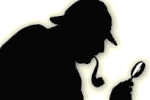

















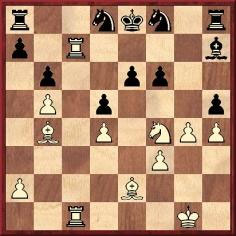







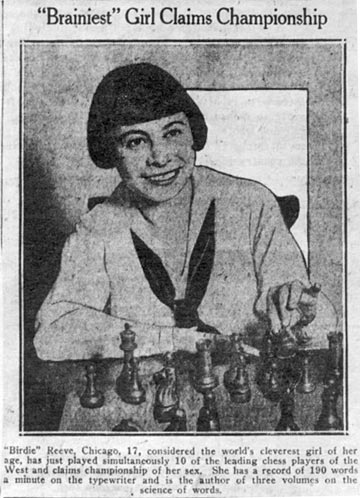


 Edward
Winter is the editor of
Edward
Winter is the editor of 




